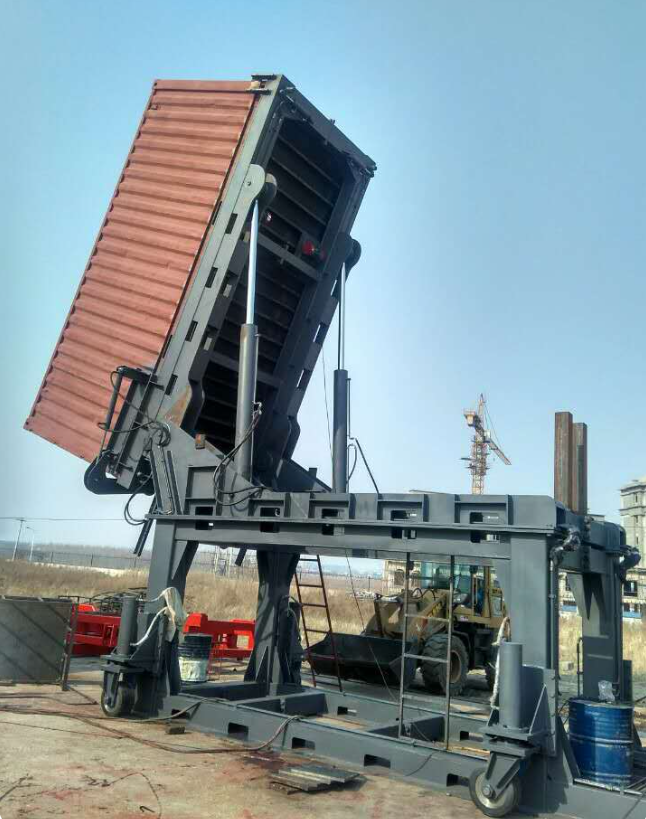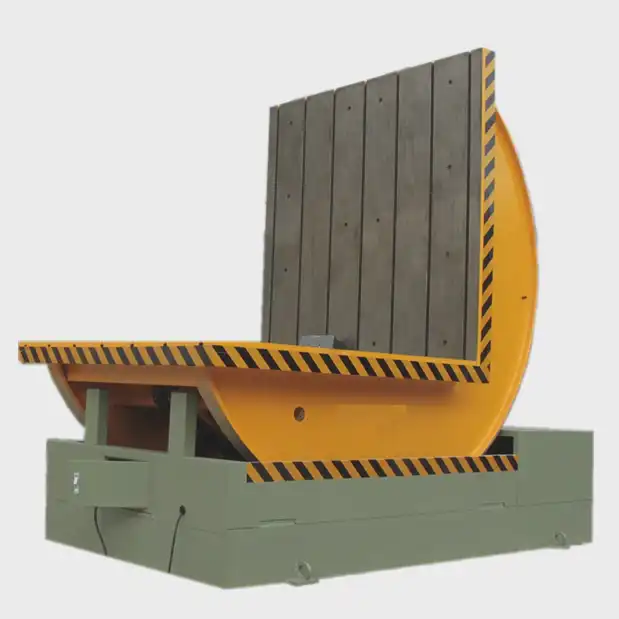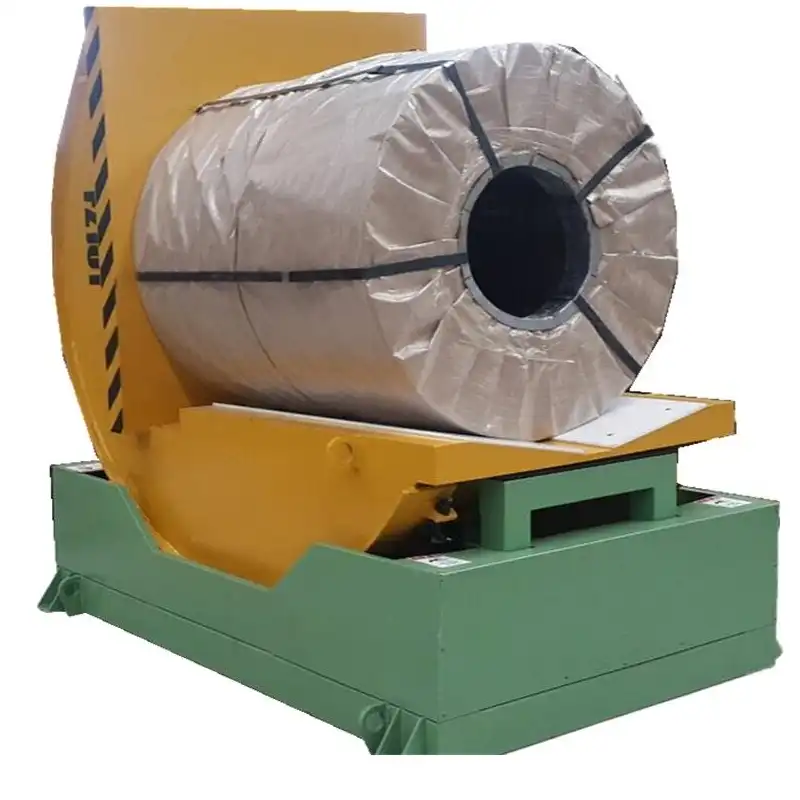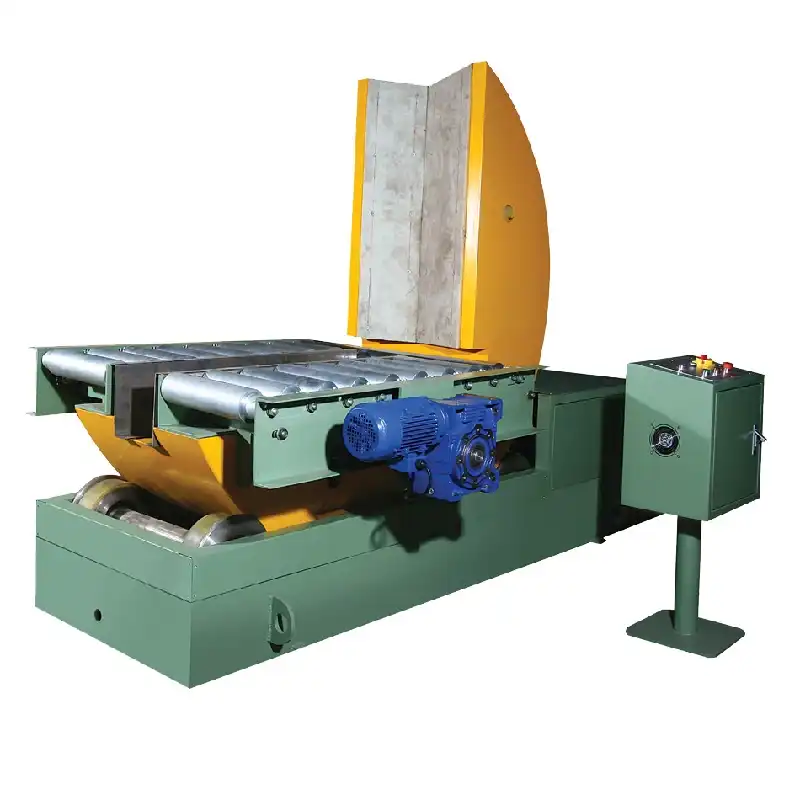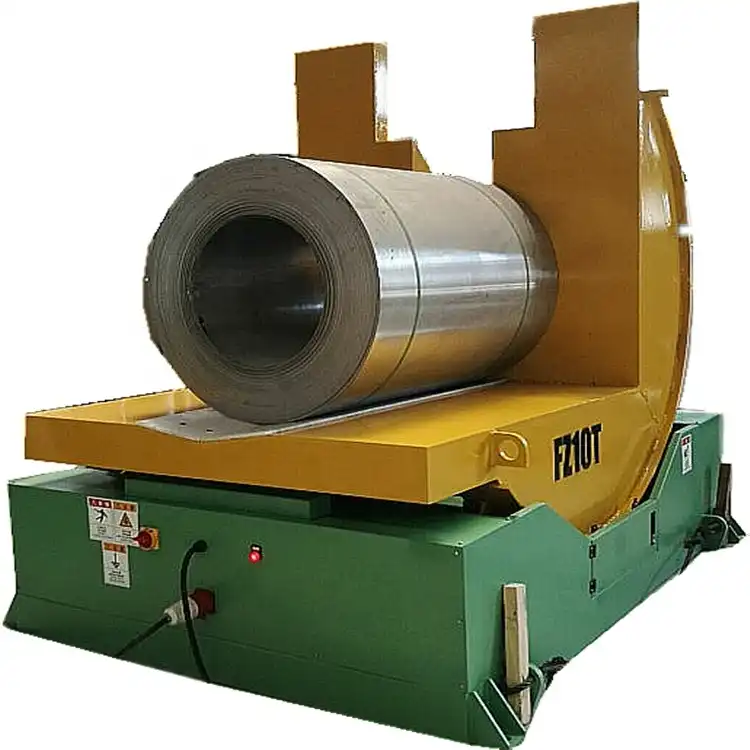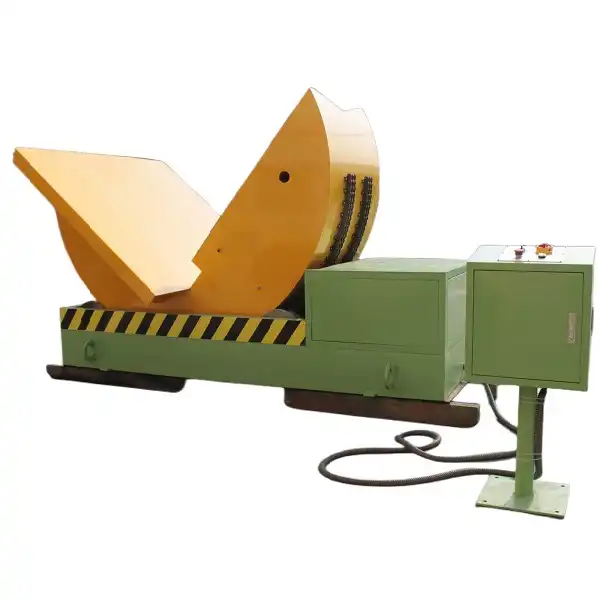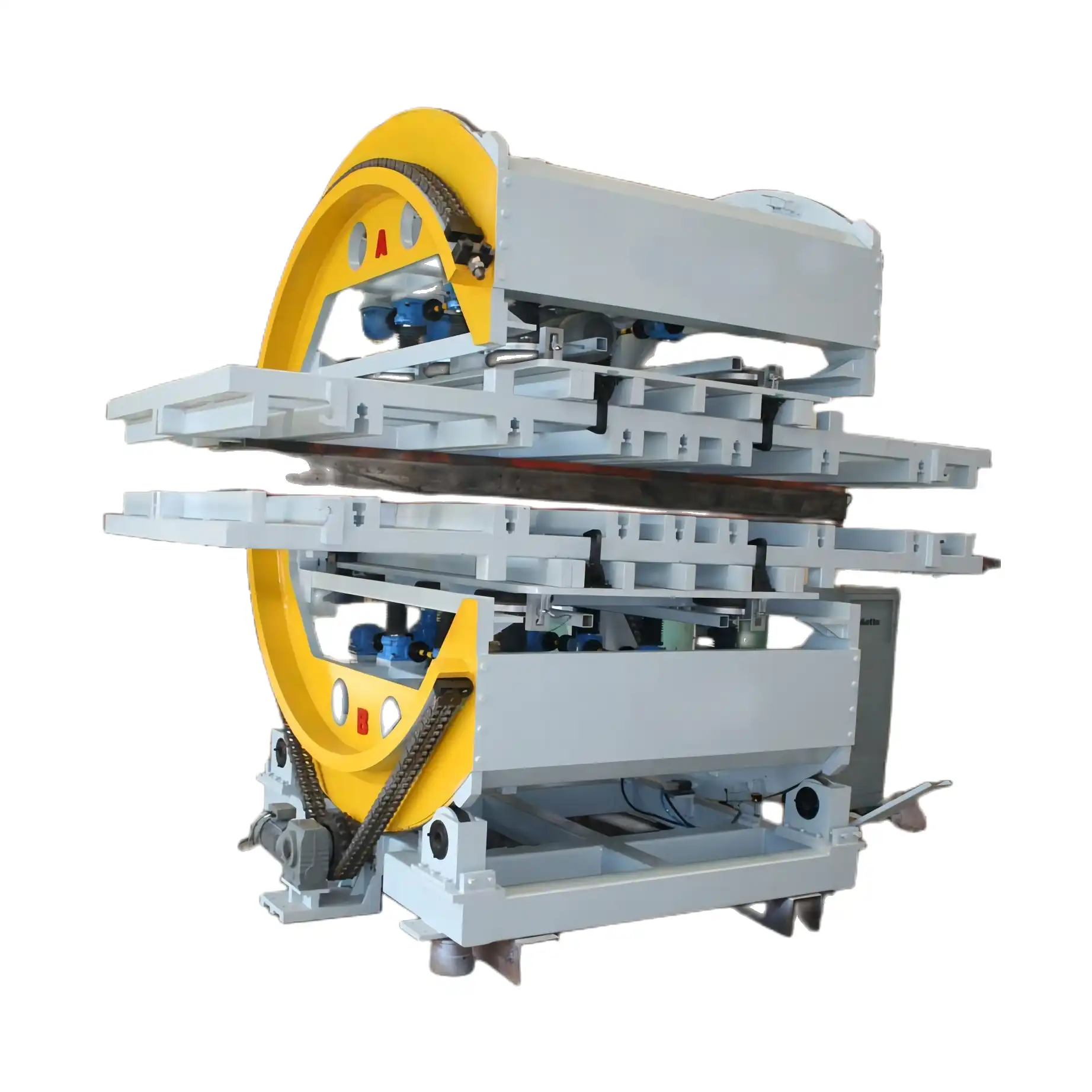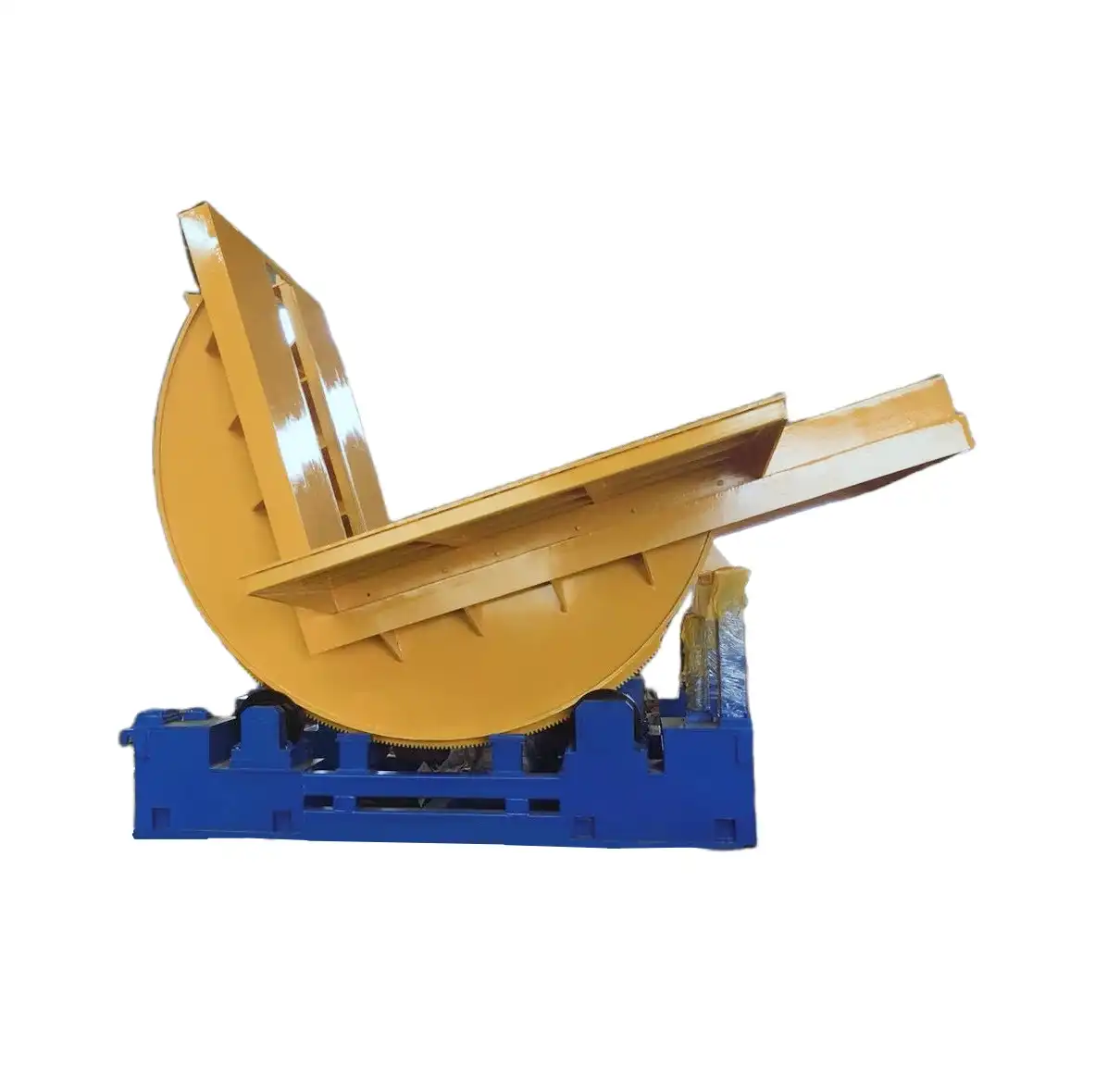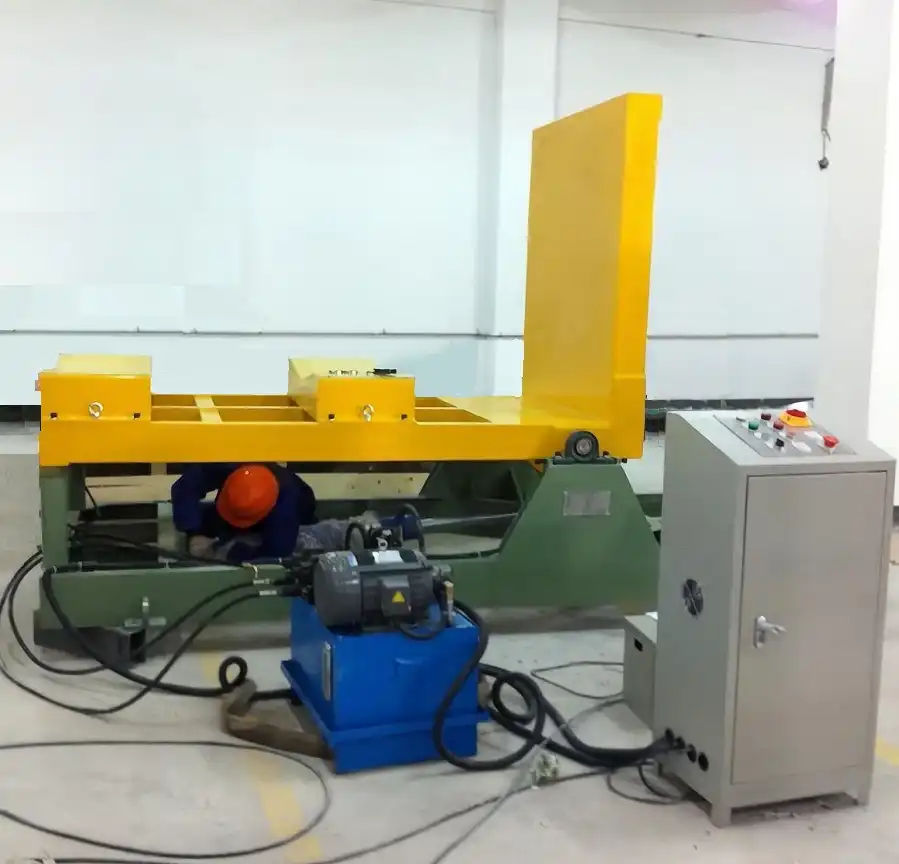Structure and Mechanism of a Bi-Directional Container Upender
A bi-directional container upender is a specialized machine designed to efficiently flip and position containers in various orientations for loading, unloading, and transportation purposes. This equipment comprises several critical components, including a lower frame housing a lifting hydraulic cylinder, an upper frame, a sliding assembly for the container support, and locking mechanisms to secure the load during movement. Additional features such as ladders, guardrails, and traction systems provide operational safety and accessibility. This article will provide a detailed breakdown of how the bi-directional container upender is structured and how each component contributes to its functionality.
Key Components of the Bi-Directional Container Upender
The bi-directional container upender's structure is designed to handle substantial loads while allowing precise control over movement and positioning. The following are the primary structural components that make up the machine:
-
Lower Frame with Lifting Hydraulic Cylinder:
The base structure, or lower frame, houses the lifting hydraulic cylinder, which is central to the machine's operation. This cylinder drives a movable column that supports the load-bearing components above. By controlling the lifting cylinder, the lower frame enables the entire assembly to raise and lower, positioning the container at the required height for flipping and transferring.
-
Movable Column and Articulating Plate:
The movable column is positioned within the lower frame, sliding along guided tracks to allow for vertical movement. The bottom of the column is hinged to the rod end of the lifting cylinder, while the top supports an articulating plate. This plate serves as the connection point between the upper frame and the movable column, allowing for rotational movement around a central pivot shaft. This pivoting action is essential for the controlled flipping of the upper frame and container.
-
Upper Frame and Container Support Assembly:
The upper frame provides the primary structural support for the container and includes a mounting point for the container cradle or suspension assembly. Two sets of hydraulic cylinders—a primary flip cylinder and a secondary flip cylinder—are mounted on the upper frame to control the tilting and flipping of the frame. These flip cylinders allow the upender to achieve a bi-directional rotation, aligning the container for handling at different angles.
-
Primary and Secondary Flip Cylinders:
The primary flip cylinder is attached to the upper frame, providing initial rotation for partial flipping. The secondary flip cylinder is mounted on the central column of the upper frame, connected to the container cradle to complete the flipping motion. These two cylinders work in tandem to execute precise rotations, allowing the container to reach either a vertical or horizontal orientation based on operational requirements.
-
Ladder and Guardrail System:
Safety is paramount in container handling operations. The bi-directional upender includes ladders and dual guardrails for easy and secure access to elevated sections. These elements are linked to a traction hydraulic cylinder, allowing them to move in sync with the flipping action of the machine. The guardrails are mounted symmetrically on either side of the ladder, providing a protective barrier around the work area.
-
Hydraulic Traction System:
The hydraulic traction system connects to the ladder and guardrails, moving them in unison during operation. This coordination ensures that the operator or maintenance personnel can access the machine safely, even when the upper frame is in motion. The traction cylinder's rod end is attached to a fixed cylinder mount on the ladder assembly, facilitating secure operation without requiring manual repositioning.
Mechanisms for Bi-Directional Container Flipping
The bi-directional flipping mechanism is the core functionality of this machine, enabling containers to be oriented in two distinct directions. The design incorporates hydraulic systems and synchronized movements to achieve precise control:
-
Horizontal and Vertical Positioning through Flip Cylinders:
When the primary flip cylinder reaches its full stroke (extended) and the secondary flip cylinder retracts fully, the container cradle remains parallel to the ground, signifying the “ready” state for operation. This neutral position is stable and used as the starting point for flipping actions. To flip the container to one direction, both cylinders retract fully, positioning the container vertically relative to the ground.
-
Bi-Directional Flipping Range:
By adjusting the stroke of both flip cylinders, the container upender can flip the load in either direction. When the cylinders are fully extended, and the limit stoppers contact the locking blocks, the upender achieves a 90-degree rotation from the neutral position. This enables operators to perform two complete directional flips, accommodating various loading and unloading setups.
-
Synchronization of Ladder and Guardrails:
The ladder and guardrails are designed to rotate simultaneously with the flipping motion of the container, maintaining a consistent orientation for operator safety. Controlled by the traction cylinder, these components pivot 90 degrees during the flip to ensure access and safety measures are aligned, regardless of the container’s position.
Adjustments and Load Alignment Mechanisms
For precise container alignment, the upper frame of the upender includes transverse and longitudinal hydraulic cylinders. These cylinders are crucial for adjusting the container's position, ensuring that the container support brackets align accurately with the corner locking mechanisms.
-
Transverse and Longitudinal Position Adjustment:
By activating the transverse and longitudinal cylinders, operators can adjust the container’s horizontal and vertical positions. This allows the container's top corner fittings to align with the lifting lock mechanisms on the upender, creating a secure and stable fit. This adjustability is critical for handling containers of varying sizes and shapes, optimizing the machine's versatility.
-
Locking Mechanism for Stability:
Located at each of the four corners of the suspension assembly, the lifting lock mechanisms secure the container by engaging its corner fittings. These locks automatically engage and release during lifting and flipping, ensuring that the container remains fixed during handling and only disengages when in a stable position.
Safety and Operational Reliability
Given the heavy loads and complex movements involved, safety features are embedded into the bi-directional container upender to minimize operational risks.
-
Overload Protection:
Sensors monitor the hydraulic pressure in each cylinder to detect potential overloads. If excess load is detected, the system will halt the flipping operation, allowing operators to address the issue before damage occurs.
-
Limit Switches and Position Sensors:
Limit switches and sensors monitor the position of the frame and container, ensuring each motion stays within safe operational limits. This prevents accidental over-rotation or misalignment, protecting both the machine and the container.
-
Emergency Stop Functionality:
An emergency stop mechanism is incorporated to halt all hydraulic operations instantly in the event of an emergency. This feature allows operators to react quickly to unexpected issues, ensuring the safety of personnel and equipment.
Conclusion
The bi-directional container upender’s sophisticated design combines hydraulic precision with robust structural elements to handle heavy containers with efficiency and safety. Its dual-cylinder flipping mechanism allows flexible orientation control, and the integrated safety features ensure reliable operation under various conditions. By providing a structured approach to container handling, this upender enhances productivity in industries requiring high-frequency container management, setting a standard for safety and performance in material handling solutions.




